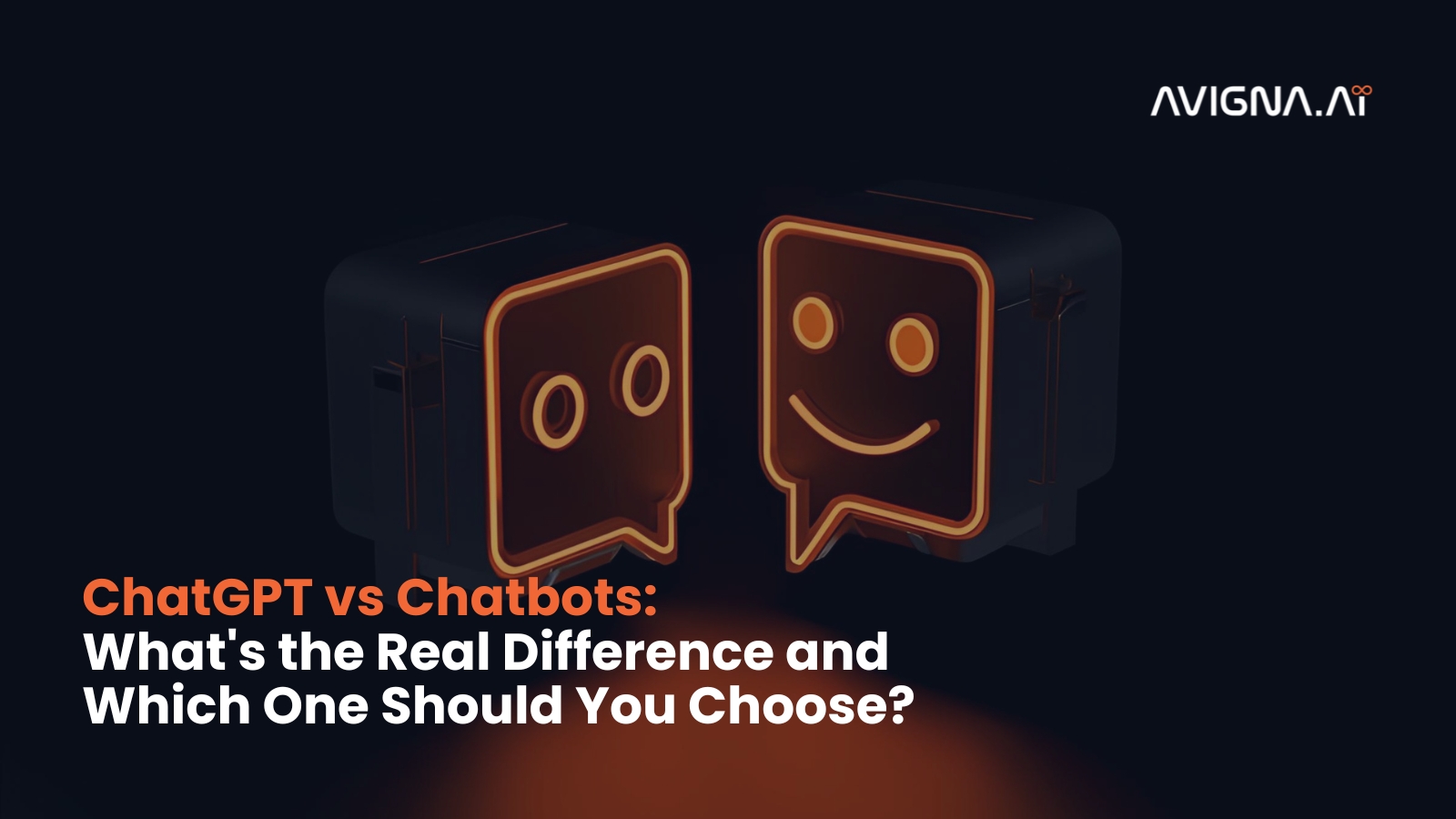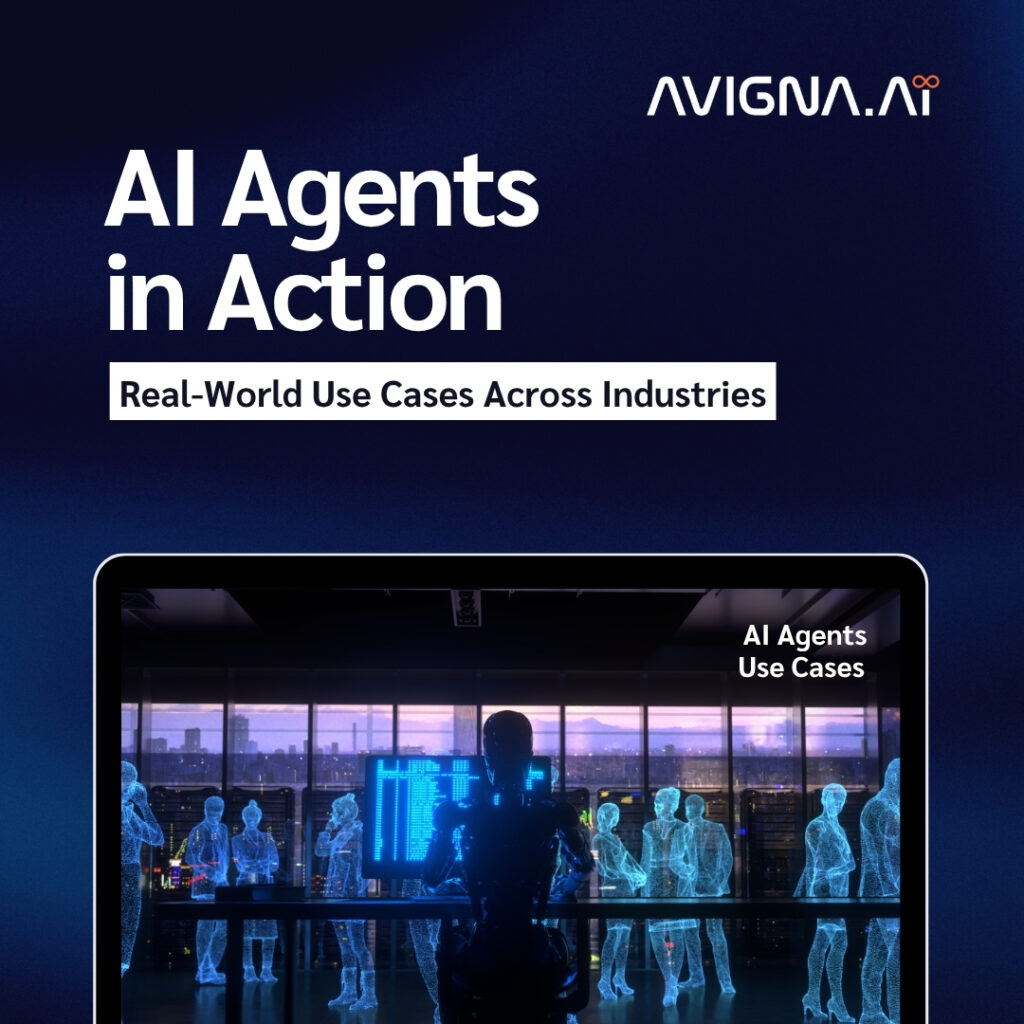ChatGPT vs Chatbots: What’s the Real Difference and Which One Should You Choose?
In the recent days, the most common observation you notice while surfing a website is a pop up that says “May I help you”. Here, you can enter your queries and answers are accordingly. But you might wonder, what lies behind that pop up. It could be a simple script for a chatbot or something intelligent that has capabilities of ChatGPT. But how will you know which kind of bot is appropriate? This article will help you understand ChatGPT vs Chatbots and choose between a simple chatbot or chatbot integrated with ChatGPT.
What Traditional Chatbots Really Are
Chatbots are computer programs that simulate human conversations by means of text and voice interfaces. They are designed for answering any queries related to the website or the product that is offered. They can give useful info, carry out small tasks or help user in any process for getting the services on websites.
These chatbots operate on preset scripts and logical flows and respond to the user’s input by strictly following certain rules. They are best for FAQs and taking users through structured workflows.
What ChatGPT Brings to the Table
ChatGPT is a product offering from OpenAI. When it was introduced, it made a breakthrough in the field of generative AI. This chatbot was trained on LLMs using huge amount of data that is present on the internet. The structure of ChatGPT is such that it can understand the tone of the query and respond differently when asked with different prompts.
Some fundamental advantages that set ChatGPT apart from the typical chatbots:
Versatility: ChatGPT is capable of engaging in different conversations. You can use it ask different set of questions from various areas. Also, it is widely used for research, code generation and daily planning.
Structured Responses: The best thing about ChatGPT is that the responses are structured and related to each other.
Broad Knowledge Base: ChatGPT is trained on a huge dataset. So, you can find different information by just asking about anything.
Continuous Learning: One of advantages of ChatGPT is that it is based on machine learning. It learns from its responses and our queries to give better results.
The Fundamental Differences: ChatGPT vs. Chatbots
Both ChatGPT and chatbots aim to converse like humans, yet there is a huge gap in the performance and the respective technologies in use. The below mentioned differences will help you choose better one for yourself:
Architectural Differences
The first difference between ChatGPT and conventional chatbots is the structure that is used for their development:
Rule-based Approach: The chatbots that you see normally on websites are made on some basic scripts or logic. They generally offer a set of responses that are preset by the developer and it may not be useful for everyone.
AI-powered Approach: On the other hand, ChatGPT uses the natural language processing (NLP) and machine learning through the large language models (LLMs) such as GPT-4. These models have access to a very large amount of data. This makes them capable of comprehending and generating human-like replies instantly without being limited by strict rules.
Conversational Capabilities
The structural differences between ChatGPT and conventional chatbots lead to different abilities in conversations:
Flexibility and Adaptability: ChatGPT is better when it comes to continuous conversations. It takes users input and can generate different results for the same input if the previous results are not satisfactory. The answers can change with context and it remembers earlier requests too. Whereas, the normal chatbots just run on same script again and again and can be frustrating to get a desired result in one time.
Contextual Understanding: ChatGPT can remember the context of a conversation and can respond accordingly. At the same time, chatbots usually forget the conversation context and, as a result, give disjointed or, at times, even disassociated answers.
Knowledge Breadth: ChatGPT represents a learning system. It means that it can be trained regularly on new data as well as it learns from the data that is given by users. Its knowledge is across different domains such as science, latest news, articles etc.
On the contrary, chatbots are typically designed to deal with a narrow spectrum of responses and data. Hence, their knowledge is limited.
Language Proficiency: ChatGPT was earlier released in English. However, it is now accessible in different languages in different regions of the world. Whereas, the chatbots basically work on a particular language that might be difficult to understand for some users.
Deployment and Customization
You read how both these solutions are based on different architectures and use different conversation techniques to work. Therefore, their deployment and customization is unique too:
Deployment Complexity: Integration of ChatGPT in a business requires technical expertise and skilled personnels to work on it. It involves various steps such as creating API access, building user-defined interfaces, and customizing the model for particular agenda. But, chatbots are very easily deployable solutions compared to the ChatGPT since they come with user-friendly interfaces and templates.
Customization Capabilities: Personalization in traditional chatbots is very limited and you can add certain workflows only. The responses are generic for everyone in most cases. However, ChatGPT can be customized as per the requirement of a company. It can be trained on a particular set of data and prompts can be created according to the brand.
Choosing the Right Solution
Choosing a particular type of solution depends on type of business, your needs, and sophistication that you want in your system. Before choosing a particular solution look out for these:
Conversational Complexity: ChatGPT would be useful in cases when users want conversations that are open and flexible. Also, if you need your results to be flexible, ChatGPT will be a good option. But if your needs are more related to managing structured workflows and usual questions, a chatbot might be a more effective solution.
Personalization and Customization: If you need a lot of customization, such as merging your own data sources or tuning the language model for you use case, then ChatGPT would give you more options. If you need simple interface then, chatbots can work for you.
Maintenance and Scalability: The maintenance and scalability of ChatGPT should be weighed carefully if the business expects to grow quickly or if the number of users is expected to increase significantly. Whereas, using chatbots would be easier to manage and scale.
Budget and Resources: The budget is the another important factor that must be considered while choosing a solution. ChatGPT demands a good amount of initial investment and you will need professionals to train it. Chatbots are cheaper and do not require much expertise for integration.
Industry and Use Case: Different industries or applications may prefer either chatbots or ChatGPT-based solutions. For E.g., customer service-oriented companies that deal mainly with customers can use rules-based chatbots. However, a content or creative work industry would prefer ChatGPT more.
There are situations when combining ChatGPT with chatbot will be the most efficient and effective solution. The chatbot may be used for customer initial interactions and simple tasks. But, if the user needs detailed results, he can switch to ChatGPT enabled chatbot for better understanding. This can help companies to use advantages of both the technologies and in turn increase customer satisfaction.
Real-World Examples and Use Cases
To understand the practical use of ChatGPT and chatbots, let us take a look at some real-world examples and use cases:
Customer Service and Support
Chatbots are usually used in retail-based companies that use it for common customer queries, like store hours, return policies, and product availability.
You can find ChatGPT in online shopping websites where the products are recommended based on your interests. It will also help you complicated problems in situations like filing for refund after getting a bad product.
Content Creation and Ideation
A content marketing agency takes advantage of a chatbot in the process of brainstorming. It helps the clients to come up with initial ideas for blog posts, social media captions, and other written content.
Publishers can take the help of ChatGPT to assist their writers in drafting and refining articles, performing research, and even suggesting headlines and story angles. It can help writers to think out of the box to write their best content.
Education and Training
Universities usually implement chatbots that help students in their daily needs. It can give details like class schedules, registration deadlines, and resources available on the campus. After this implementation, students need not run to administrative offices for such tasks.
Online learning platform are using ChatGPT in their chatbot that helps students to clarify their doubts and offer explanation to difficult topics. This removes burden from the teachers as they cannot be available every time to solve the students doubts.
Business and Productivity
A professional services firm relies on a chatbot that handles internal processes, such as meeting planning, time and expenses monitoring, and new employee induction. Thereby, it brings uniformity and effectiveness to these repetitive tasks.
Management consulting firm can use ChatGPT for their market research, competitive analysis, and strategic planning. This helps them to reduce time required for these researches, and also they can prepare a first draft of their report with this tool.
Conclusion
The method of conversation you choose shapes how customers experience your brand. Simple chatbot doesn’t mean the experience will be bad and complex doesn’t always mean better. However, the important factorthin here is your needs. Always choose the tool that matches your needs and not that tool which sounds impressive.
Businesses can only grow that choose wisely, implement thoughtfully and optimize continuously. You could select either of them or a blend of both, but the key is serving customers effectively while handling costs intelligently.
At Avigna.AI, we are redefining how enterprises benefit from contextual chatbots. Contact us to learn how we are doing this.







